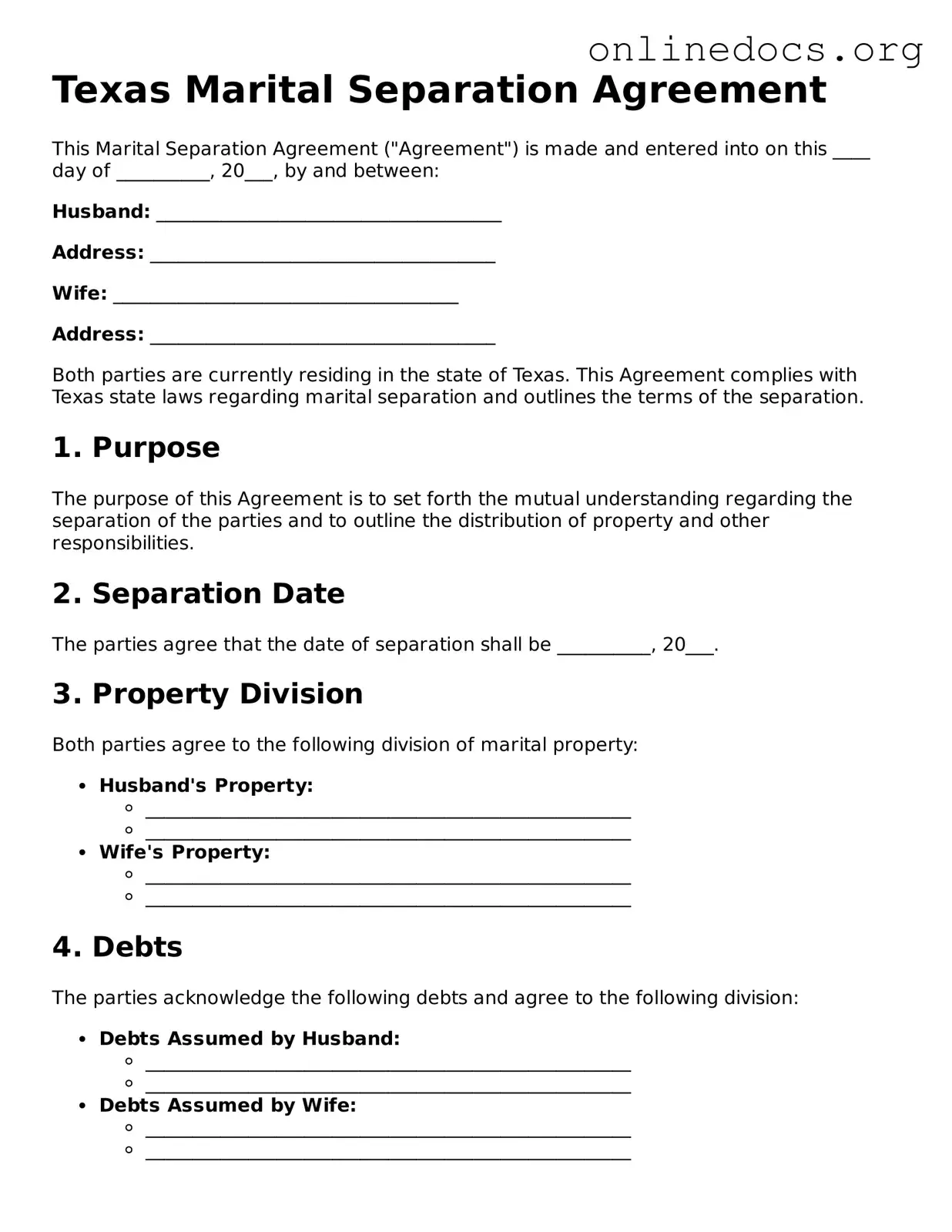The Texas Marital Separation Agreement is similar to a Divorce Settlement Agreement. Both documents outline the terms of the separation or divorce between spouses. They address issues such as property division, child custody, and support payments. A Divorce Settlement Agreement is typically used when a couple has decided to end their marriage, while a Marital Separation Agreement may be used when they are separating but not yet ready to divorce.
Another document that resembles the Texas Marital Separation Agreement is the Child Custody Agreement. This agreement specifically focuses on the arrangements for children involved in a separation or divorce. It details custody arrangements, visitation schedules, and parental responsibilities. While the Marital Separation Agreement covers broader issues, the Child Custody Agreement zeroes in on the well-being of the children.
The Property Settlement Agreement also shares similarities with the Texas Marital Separation Agreement. This document specifically deals with the division of assets and debts between spouses. It outlines who gets what and how financial responsibilities will be handled after separation. While both documents may address property issues, the Property Settlement Agreement is more detailed in this area.
A Cohabitation Agreement is another document that has similarities. While primarily used by unmarried couples living together, it can address similar issues as a Marital Separation Agreement. Both documents can outline how property will be divided and what happens if the relationship ends. However, a Cohabitation Agreement is often less formal and may not cover all the same legal aspects.
The Separation Agreement is a broader term that encompasses various types of separation arrangements. It can include financial terms, child custody, and support, similar to the Texas Marital Separation Agreement. The key difference is that a Separation Agreement can be used in different contexts, not just within the confines of marriage.
An Employee Handbook is a comprehensive document provided by an employer to its employees. It contains important information on company policies, procedures, and the workplace culture. This handbook serves as a guide for both new and existing employees to understand their rights and responsibilities within the company, making it essential to refer to resources like legalformspdf.com for additional information and templates.
The Prenuptial Agreement is also somewhat similar, as it outlines how assets will be handled in the event of a separation or divorce. While a Prenuptial Agreement is created before marriage, it serves a similar purpose of protecting individual interests. Both documents aim to prevent disputes over property and financial matters later on.
The Postnuptial Agreement is another related document. This agreement is created after marriage and can address similar issues as the Texas Marital Separation Agreement. It can outline how assets will be divided and can include provisions for child custody and support. The key difference is the timing of when the agreement is made.
A Mediation Agreement can also be compared to the Texas Marital Separation Agreement. This document results from mediation sessions where both parties negotiate terms of their separation. Like the Marital Separation Agreement, it can cover custody, support, and property division. The main distinction is that a Mediation Agreement often reflects the compromises reached during mediation.
Lastly, the Legal Separation Agreement is closely related. This document formalizes the terms of a legal separation, which is different from divorce. It can include similar provisions regarding property, child custody, and support. However, a Legal Separation Agreement allows couples to remain married while living apart, unlike the finality of a divorce.
